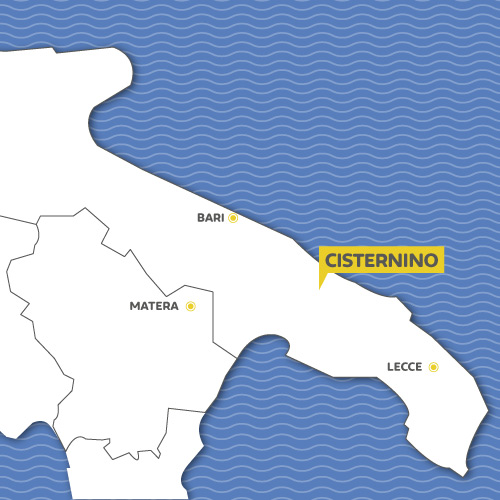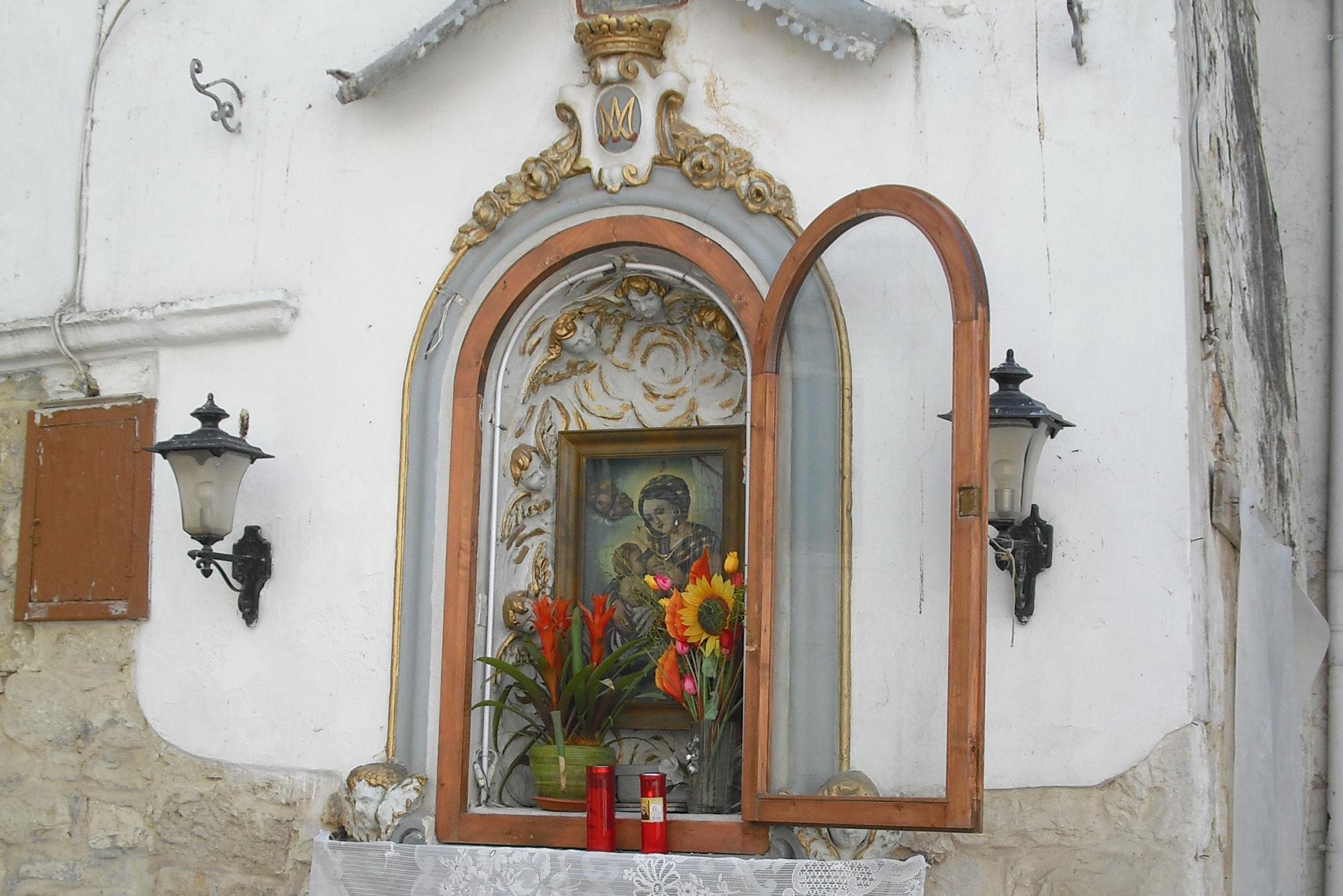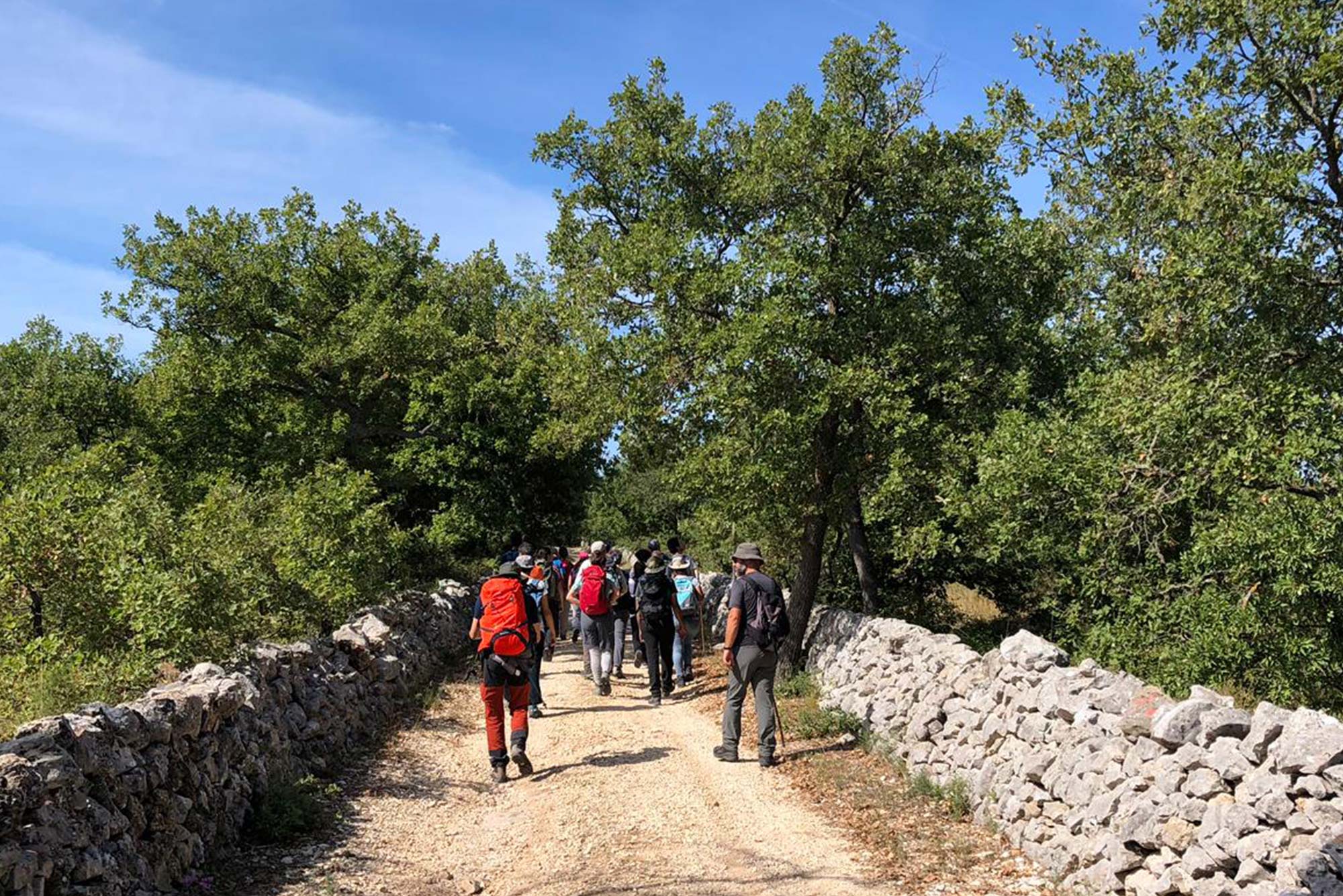Cisternino

Perched on the Murgia dei Trulli, Cisternino is one of Italy’s Most Beautiful Towns.
Here you can wander around narrow streets paved with “chianche” (typical limestone paving stones) and the local grilled meat knowed as “fornello pronto”. Facing onto the Itria Valley in an area known as the Murgia dei Trulli, Cisternino is 46 kilometres (28 miles) from Brindisi, near the Adriatic coast. The Porta Grande (or Norman-Swabian) Tower, topped by a statue of San Nicola, is the main entrance to this, one of Italy’s Most Beautiful Towns.
Visit the old town centre and admire its many historical residences: the Governor’s Palace, a beautiful example of baroque architecture; the 16th century Bishop’s Palace; Palazzo Amati; Palazzo Lagravinese; and Palazzo Ricci-Capece with its Wind Tower.
A bit further on and you'll find the convent of Capuchin monks with the Church of Sant’Antonio, the Church of San Quirico, and the 16th century Chiesa Matrice (Mother Church), dedicated to San Nicola di Patara and constructed over the ruins of an earlier Paleo-Christian church.
On Easter Monday, the townspeople gather at the Sanctuary of the Madonna d’Ibernia, an archaeological site with Roman and medieval ruins. They bring with them “u chrruchl,” a sweet that's said to bring good luck and is shaped like a small bag with two hard-boiled eggs (for the men), or like a doll with an egg in its belly (for the women).
What to see:
Mother church of San Nicola di Patara
Torre Amati, Torre Capece or del Vento, Norman Tower of Porta Grande
Conservatorio botanico della Valle d’Itria
What to taste:
Bombetta
Collina di Brindisi DOP
Valle d'Itria IGT

Votive shrines in Puglia
Since ancient times, man has wanted to establish a link with the land that he considers “his” by interpreting unusual events as supernatural signs: the will of God consecrating the bond. And so they arose, crossroads and places in which there were miraculous events or events which were difficult to reconcile with a rational explanation. They began to be considered sacred and distinguished from the modest chapels in which statues were placed. The coming of Christianity saw an introduction of new objects of devotion being placed inside these shrines, like statues of saints, of Mary, mother of Jesus, and of Christ. In line with their origins, the name “edicole” (shrines) derives from the Latin word “aedicula’, which means a small temple, tabernacle, a small sanctuary and, most probably, the shrines already existed in ancient Egypt and Greece. They were repudiated by the first Christians and slowly came back into accepted practice during the Medieval Age.

The Misthery of the devil's Jazzo
Going on vacation in Puglia often means staying in fortified farmhouses adapted for tourism, called masserias. They are found throughout the region, each one with characteristics tied to the unique nature of the specific area in which it is located. They are certainly some of the most prevalent rural buildings in this part of Italy, but they are not the only ones. Entering the region called Murgia, and within the sub-region of Gargano, you can find, together with the masserias, little houses called jazzes.